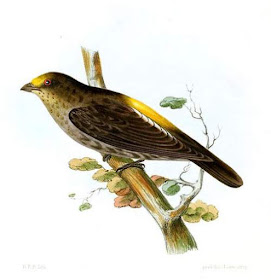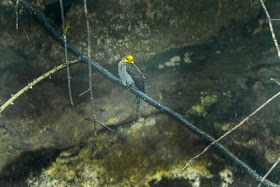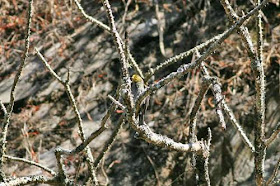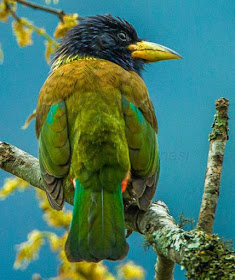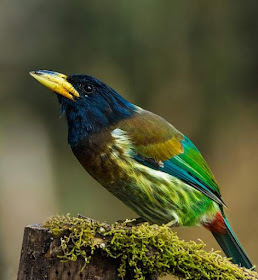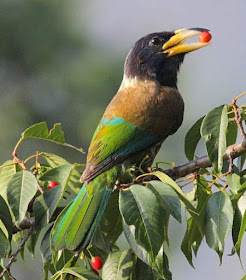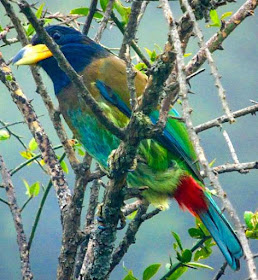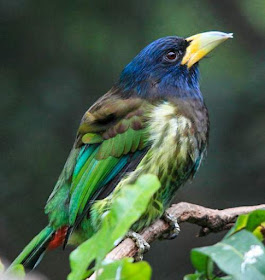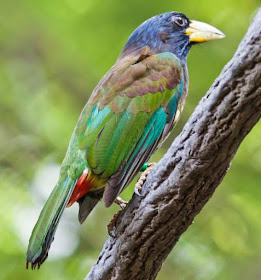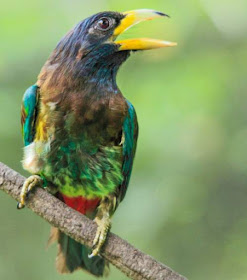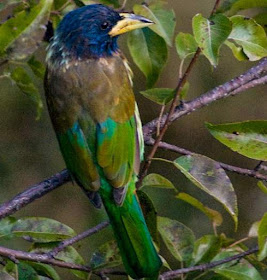The Eurasian wryneck (Jynx torquilla) belongs to the family of woodpeckers, piculets, wrynecks and sapsuckers, Picidae.
The Eurasian wryneck species are distributed in Indian subcontinent, Europe, western, central and eastern Asia, central Africa and southeast Asia. These wryneck species are able to turn their heads almost 180 degrees and hence the name "wry-neck". These wrynecks are polytypic species.
Eurasian wryneck - Overview
- Scientific name: Jynx torquilla
- Species author: Linnaeus, 1758
- Synonyms/Protonym: Jynx Torquilla Linnaeus, 1758
- Family: Picidae › Piciformes › Aves › Chordata › Animalia
- Vernacular names: English: Eurasian wryneck, Chinese: 蚁鴷, French: Torcol fourmilier, German: Wendehals, Spanish: Torcecuello euroasiático, Russian: Обыкновенная вертишейка, Japanese: アリスイ, Hindi: रामचिरेया
- Other names: European Wryneck, Northern Wryneck
- Distribution: Indian subcontinent, Europe, Asia, Africa, southeast Asia
- Diet and feeding habits: larvae and pupae of ants, beetles and larvae, moths, spiders, aphids
- IUCN status listing: Least Concern (LC)
Appearance, physical description and identification
The Eurasian wryneck (Jynx torquilla) is a small long-tailed woodpecker, measuring 15 to 17 cm in length and weighing 30 to 50 grams.The Eurasian wryneck is small, slim and elongated, looking more like a thrush than a woodpecker. It can rotate its head up to 180 degrees and look virtually over the back.
If startled, the Eurasian wryneck will shake and twist its flexible neck and raising its crest, will hiss like a snake. Hence, the name wry-neck. Sometimes when threatened it will close its eyes and go limp, playing dead.
The plumage of the Eurasian wryneck is cryptically colored in shades of brown and gray. The upperparts are pale grayish brown with rufous and blackish bars and streaks. There are dark brown eye stripes starting from the rear edge of the eyes and extending to the neck.
The rump and uppertail coverts are gray with brown speckles and stripes. The tail of the Eurasian wryneck is rounded. The tail is grayish, having brown speckles and faint grayish brown bands. The primaries and secondaries are brown with rufous and sandy brown bars and markings.
The chin of Eurasian wryneck is whitish with brown barring. The throat, cheeks and upper breast are buff with brown barring. The underparts are creamy white with brown bars and spots. The flanks are buff with brown bars and spots. The undertail is buff with narrow brown bars.
The bill of the Eurasian wryneck is shorter for a woodpecker. It is grayish brown, slender and pointed and has a broad base. The long, pink, sticky tongue wraps around the ant before being pulled out.
The irises are brown and eyes have brown eye-ring. The feet are pale grayish brown. The digits are zygodactyl, two toes facing forward (digits 2 and 3) and two back (digits 1 and 4). zygodactyly helps in clinging to vertical surfaces.
The call of the Eurasian wryneck is repeated harsh, shrill "quee..quee..quee" and "Kwieh..Kwieh..Kwieh" sound. An alarmed bird makes repeated "tuck..tuck..tuck" sound and also hisses like a snake.
 |
| 1.Birds of India - Image of Eurasian wryneck - Jynx torquilla by Arnstein Rønning |
 |
| 2.Indian birds - Picture of Eurasian wryneck - Jynx torquilla by Pepe Reigada |
 |
| 3.Birds of India - Photo of Eurasian wryneck - Jynx torquilla by |
Origin, geographical range and distribution
The Eurasian wryneck species are distributed in Europe, western, central and eastern Asia, southeast Asia, Indian subcontinent and Africa.In India, these Eurasian wryneck species are distributed in almost all the states. They do not occur south of Mysore, Cauvery delta and Puducherry. Breeding populations occur in Jammu and Kashmir, Himachal Pradesh, Punjab and Uttarakhand.
The Eurasian wryneck nominate subspecies J. t. torquilla is distributed in most of Europe and western, central and eastern Asia. This subspecies winters in Iberian Peninsula, Africa, India and southeast Asia.
The Eurasian wryneck subspecies J. t. tschusii is distributed in east Adriatic coast, Italy, Corsica and Sardinia. This subspecies winters in southern Italy and Africa.
The Eurasian wryneck subspecies J. t. mauretanica is distributed in northwest Africa. The subspecies J. t. himalayana occurs in north Pakistan and northwest India. This wryneck subspecies winters southwards in lower altitudes.
The Important Bird and Biodiversity Areas (IBA) of these Eurasian wryneck subspecies in Russia are, Bryansko-Zhizdrinskoye woodland, Racheyski forest and Zhigulevski Nature Reserve. The IBA in Ukraine are Gomol'shans'ka forest and Samars'kyj forest.
The IBA of the Eurasian wrynecks in Switzerland are Simplon region, Mont Tendre, Maggia valley, Bregaglia valley, Central Valais between Sierre and Visp, Generoso mountain, Heinzenberg mountain and surrounding valleys, Jura mountains of Baselland and Swiss National Park.
The IBA of the Eurasian wrynecks in Slovenia are Vipavski rob, River Mura, Kozjansko and Kočevsko. The IBA in Bulgaria are Western Balkan, Byala Reka, Strandzha and Sredna Gora. The IBA of wrynecks in France is Vallée du Régino.
The IBA of the Eurasian wrynecks in Czech Republic are Pálava, Beskydy mountains, Confluence of the Morava and Dyje rivers, Lednicke rybniky ponds, Krivoklatsko, Krivoklatsko and Doupov hills. The IBA in Serbia is Deliblatska pescara.
Ecosystem and habitat
These Eurasian wryneck species have low forest dependence. These species normally occur in altitudes from 0 to 3300 meters. The artificial ecosystems of these Eurasian wrynecks include cultivated land, pastureland, plantations, rural gardens, orchards and urban parks.The natural ecosystems of these wryneck species include boreal forests, temperate forests, temperate grasslands, coastal marine lagoons, coastal freshwater lakes, Mediterranean-type shrublands, dry and moist shrublands.
Diet and feeding behavior
The diet of the Eurasian wryneck consists mainly of larvae and pupae of ants. Small beetles, aphids, dipteran flies, bugs, moths and spiders are their primary food. Compared to their size, these birds have a very long tongue.Unlike woodpeckers, these wryneck species do not peck holes in trees in search of food. They extend their long sticky tongues between cracks in wood and bark to probe and snap up ants and other insects.
The Eurasian wrynecks also forage on the ground and ant-hills, moving around with short hops with the tail held in a raised position. They also catch flying insects on the wing.
Reproduction and breeding habits
The breeding season of these Eurasian wryneck species is in May and June in most of their range. A second clutch may be laid in June-July, especially in southern breeding populations. In rare cases a third brood is raised.On return to the breeding grounds, the Eurasian wryneck species pair up for the season and set up territory. The territory is defended very aggressively. These birds display by perching facing each other with open bill and bobbing their heads up and down.
The nesting sites of Eurasian wryneck include old orchards with several ant nests, old trees with cavities and pre-existing holes in the trunk, crevices in walls vacant burrows. Sometimes they evict a previous occupant, its eggs and nestlings from the nesting hole.
The nest burrow is cleared of eggshells and other debris from the previous nesting. They do not use any nesting material and lining. The Eurasian wryneck clutch contains usually between seven and ten dull white, partially opaque eggs.
The eggs are laid daily and after the last egg is laid, both the Eurasian wryneck parents incubate, the female brooding for longer periods. The chicks hatch out in about twelve days. The nestlings are fed by the parents. They fledge in about twenty days.
Migration and movement patterns
The Eurasian wryneck species are highly migratory birds.The breeding populations of Eurasian wryneck occur in Europe and Asia. The breeding birds from Europe and western Asia migrate southwards, south of Sahara, for wintering in western, central and eastern Africa.
The breeding populations of Eurasian wryneck from central and eastern Asia migrate southwards to Indian subcontinent, southeast Asia and Japan for wintering. They return to the breeding grounds in the early summer.
Both in the spring migration of these wrynecks to their breeding grounds and in the autumn migration to wintering grounds, there are several stopovers for feeding. Perhaps, their short, rounded wings may a hinderance for long-haul flights.
Conservation and survival
The global population size of the Eurasian wryneck (Jynx torquilla) is estimated to number 3,000,000 to 7,200,000 mature individual birds. The overall population trend of these species is reported to be decreasing.Throughout its range this wryneck species is reported to be common to uncommon. The generation length is 3.5 years. Its distribution size is about 38,400,000 sq.km.
Habitat degradation, climate change, agricultural expansion and decrease in ant populations due to pesticide use are the main threats that may endanger the survival of these wryneck species.
IUCN and CITES status
The Eurasian wryneck (Jynx torquilla) does not approach the thresholds for being Vulnerable, either under the range size criterion, or under the population trend criterion or under the population size criterion.The IUCN (International Union for Conservation of Nature) has categorized and evaluated the wryneck species and has listed it as of "Least Concern". The CITES (Convention on International Trade in Endangered Species of Wild Fauna and Flora) status is ‘Not Evaluated’ for Eurasian wryneck (Jynx torquilla).
The four recognized subspecies of the Eurasian wryneck are: Jynx torquilla torquilla Linnaeus, 1758, Jynx torquilla tschusii O. Kleinschmidt, 1907, Jynx torquilla mauretanica Rothschild, 1909 and Jynx torquilla himalayana Vaurie, 1959.
1.Eurasian wryneck image source: https://commons.wikimedia.org/wiki/File:Jynx_torquilla_no_(cropped).JPG (cropped)
Image author: Arnstein Rønning | License: CC BY 3.0
2.Image source: https://commons.wikimedia.org/wiki/File:Wryneck_by_Pepe_Reigada.jpg (cropped)
Image author: Pepe Reigada | License: public domain
3.Image source: https://www.flickr.com/photos/eaglestein/4921048842/ (cropped)
Image author: Arnstein Rønning | License: CC BY 2.0 as on 7/30/17
Current topic in Birds of India: Eurasian wryneck - Jynx torquilla.


